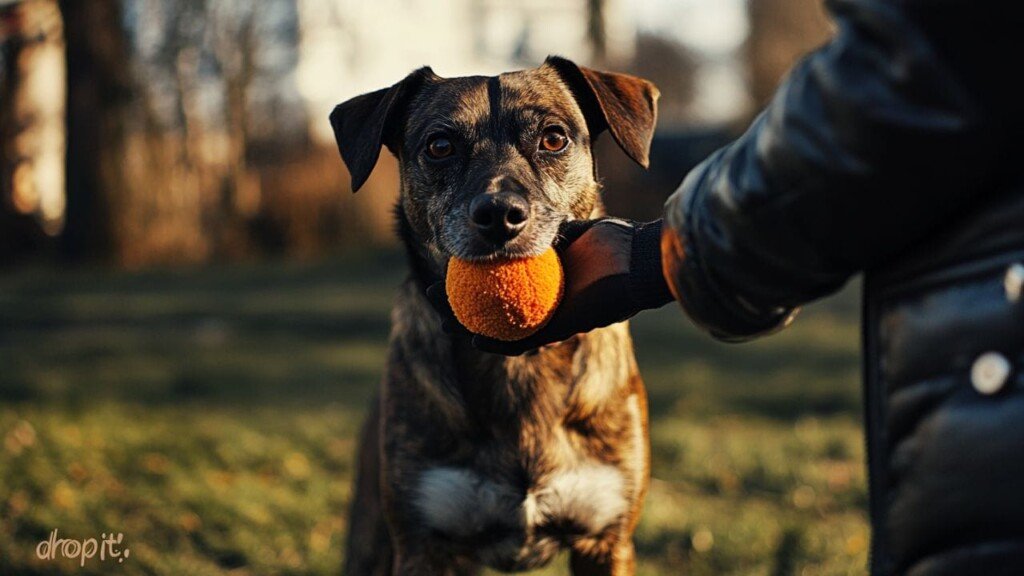Teaching your dog to “drop it” is a crucial command that can keep them safe and make your life easier.
Whether your furry friend has picked up something dangerous or you’re simply playing fetch, a reliable “drop it” can be a lifesaver.
Let’s explore how to teach this essential skill to your canine companion effectively and positively.
Why ‘Drop It’ is Important
The “drop it” command can prevent your dog from ingesting harmful objects.
It’s useful during playtime to encourage good manners and sharing.
This skill can also help in situations where your dog has grabbed something valuable or fragile.
Mastering “drop it” enhances communication between you and your pet, strengthening your bond.
Want to keep up to date with new animal stories?
Starting with the Basics
Begin training in a quiet, distraction-free environment.
Choose a toy your dog likes but isn’t overly possessive about.
Have treats ready that are more enticing than the toy you’re using.
Keep training sessions short, around 5-10 minutes, to maintain your dog’s interest and focus.
The Trading Game
Start by offering your dog the toy and letting them take it.
Hold a high-value treat near their nose, but don’t give it yet.
As soon as your dog drops the toy to sniff the treat, say “drop it” and give them the treat.
Repeat this process several times, gradually introducing the verbal cue before they drop the toy.

Adding the Verbal Cue
Once your dog is consistently dropping the toy for the treat, start saying “drop it” just before offering the treat.
This helps your dog associate the action with the verbal command.
Always reward immediately when they drop the item after hearing the cue.
Practice this step multiple times until your dog responds reliably to the verbal cue.
Increasing Difficulty
After mastering the basics, use toys of increasing value to your dog.
Practice in different locations around your home to generalize the behavior.
Gradually increase distractions during training sessions.
Remember to always set your dog up for success by not making the challenges too difficult too quickly.
Phasing Out Treats
Once your dog is responding consistently, start varying the rewards.
Sometimes offer praise and petting instead of a treat.
Occasionally, give the toy back as a reward for dropping it.
This unpredictability can make the game more exciting for your dog and strengthen the behavior.
Real-Life Applications
Start practicing “drop it” during regular play sessions.
Use the command when your dog picks up items during walks.
Apply it to household objects your dog might grab.
Always praise and reward your dog for complying, even in non-training situations.
Troubleshooting Common Issues
If your dog refuses to drop an item, avoid chasing or tugging – this can turn it into a game.
For dogs who run away with items, teach “come” separately and then combine it with “drop it”.
If your dog becomes possessive, consult a professional trainer for guidance on resource guarding.
Never punish your dog for not dropping an item, as this can create negative associations with the command.
Making it a Game
Turn “drop it” practice into a fun game to keep your dog engaged.
Play “trade up,” where you offer increasingly exciting toys or treats for dropping items.
Use two identical toys, asking your dog to drop one to throw the other.
This approach keeps training positive and reinforces that dropping items leads to more fun.

Maintenance and Ongoing Practice
Even after your dog has mastered “drop it,” continue to practice regularly.
Incorporate the command into daily routines and playtime.
Occasionally revisit formal training sessions to reinforce the behavior.
Remember to always reward your dog for complying, even if it’s just with praise and affection.
Safety Considerations
Never use “drop it” as a punishment or in an angry tone.
If your dog has ingested something dangerous, contact your vet immediately rather than trying to make them drop it.
For dogs with resource guarding tendencies, consult a professional trainer before attempting “drop it” training.
Always prioritize your dog’s safety and well-being during training sessions.
Conclusion: A Skill That Could Save Your Dog’s Life
Teaching your dog to “drop it” reliably is more than just a neat trick – it’s a potentially life-saving skill.
With patience, consistency, and positive reinforcement, you can train your furry friend to respond to this command in various situations.
Remember, every dog learns at their own pace, so stay patient and keep training sessions fun and rewarding.
By mastering “drop it,” you’re not only making your life easier but also ensuring your dog’s safety in potentially dangerous situations.
Keep practicing, stay positive, and enjoy the enhanced communication and trust this skill brings to your relationship with your canine companion.
Share this guide with fellow dog owners to help create safer, happier environments for our furry friends everywhere!
Happy training, and here’s to more harmonious fetch games and worry-free walks in your future!
SHARE now with your friends!


